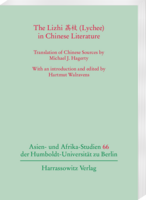|
weitere Titel zum Thema:
Download:
Bitte beachten Sie: Mit digitalen Produkten in Ihrem Warenkorb
wird die Bezahlung nur per PayPal möglich. Der Download dieser Produkte wird bereitgestellt, wenn die Bezahlung bestätigt ist. The lychee has been held in high esteem in China for at least 2,000 years. Its outer appearance, taste and delicate fragrance have not only charmed gourmets and rulers but also inspired poets and writers to compose poems and rhyming prose in its praise.
The anthology The Lychee in Chinese Literature was selected and translated by Michael Joseph Hagerty from the “Imperial Encyclopedia” Gujin Tushu Jicheng, which was edited by scholars and officials of the Peking Court and printed with movable type in 1728. His selection assembles literary compositions by many of China’s best-known poets, like Bo Juyi, Du Fu, Li Bo and Su Dongpo. While there are many volumes of translations of Chinese poetry into Western languages, lychees and other fruits, plants or flowers are rarely represented. Hagerty fills this gap and allows literary historians to compare their description and treatment in different literatures. Plant names make translators often insecure and uneasy as they are usually philologists and not particularly familiar with historical botany; this may lead to misunderstandings and wrong identifications as the regular dictionaries are far from reliable in this respect. The texts in this volume were translated in cooperation with botanists and are also copiously annotated. Chinese characters are added throughout. Indices facilitate searching the texts. The introduction by Hartmut Walravens offers a survey of related botanical translations from the Chinese, undertaken by Michael Hagerty under the supervision and patronage of the US Department of Agriculture |
|||||||||||||||||||||||||||||||||||||||||






